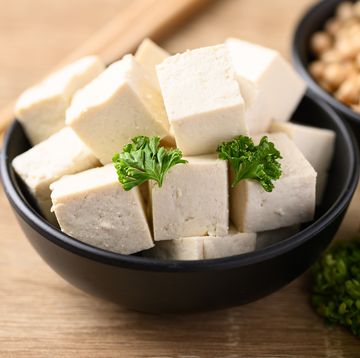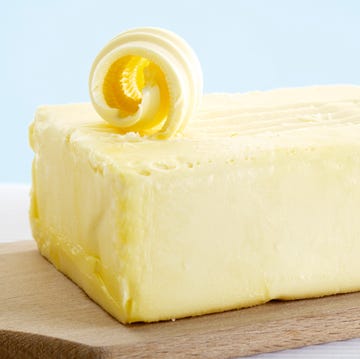Temperatures are heating up, and there's no better way to beat the heat than with a scoop of ice cream. Other than ice cream, two of the most popular fruit-based desserts that you'll find in the freezer aisle are sorbet and sherbet. They may look similar and come in similar flavors—but these treats are not the same.
If you've ever wondered what the difference is between sorbet and sherbet, you're in the right place. We're breaking down all of the qualities of both desserts so you know which one to pick the next time you're at the supermarket.
What Is Sorbet?
Sorbet is a sweet dessert that's been enjoyed for centuries. According to the New York Times, the first recorded mention of sorbet was in ancient Roman times. Emperor Nero allegedly requested to eat the snow from Mount Etna flavored with fruit juice.
More From Delish

Older iterations of sorbet are more reminiscent of what we know to be snow cones or granitas—think crushed ice with flavored syrups. However, with technological advances, sorbet has evolved into the dessert we know today.
Our modern definition for sorbet is a nondairy frozen treat made with sugar, water, and flavoring. While you can find some made with chocolate, the vast majority of sorbets have fruit flavors.
But how does sorbet get creamy, you ask? It's a combination of the ingredients and the technique. The high ratio of sugar means that the ice crystals form into small sizes when the sorbet is frozen. In addition, the constant churning in an ice cream maker disrupts the crystals as they form.
All that means is that instead of big, watery chunks of ice, the frozen liquid is broken up and evenly dispersed into the sorbet. So each bite is smooth and creamy, even without the dairy.
What Is Sherbet?
Sherbet (not "sherbert," according to Merriam Webster) is another fruity frozen dessert that's widely available in American supermarkets. You're bound to find these in push pop packaging at ice cream trucks, in large plastic tubs in the freezer aisle, and in the cases of your favorite childhood scoop shops.
Just like with sorbet, some of the most popular flavors of sherbet are variations of berry and citrus. However, there's a major difference that makes sherbet distinct. According to FDA regulations, sherbet must contain dairy. Specifically, dairy must be two to five percent by weight of the overall product.
Just because it contains dairy doesn't mean it's as creamy as regular ice cream. In fact, ice cream must contain a minimum of 20 percent milk solids (at least four times as much as sherbet does). There is also significantly less fat in sherbet: ice cream requires at least 10 percent milkfat, while sherbet cannot exceed two percent.
The source of dairy in sherbet can be milk, cream, buttermilk, and even condensed milk. However, many of the brands you'll find in stores use skim milk and supplement with small amounts of other dairy products.
The fat from the dairy contributes to the sherbet's overall smoothness and can mellow out the bright acidity in some fruit flavors. So in theory, think of sherbet as a slightly creamier sorbet.
However, there are more practical differences between the two when it comes to the current market. Sorbet is typically considered to be a higher quality, therefore more expensive, frozen dessert. Many brands tout their use of real fruit and natural flavors without added dyes.
On the other hand, sherbet can usually costs less and is often made with artificial flavors and colors. Eating a scoop of sherbet may not be the luxurious choice, but we love it for its sweet nostalgia.
Do you prefer sherbet or sorbet? Let us know in the comments.
Gabby Romero is Delish’s editorial assistant, where she writes stories about the latest TikTok trends, develops recipes, and answers any and all of your cooking-related questions. She loves eating spicy food, collecting cookbooks, and adding a mountain of Parmesan to any dish she can.














